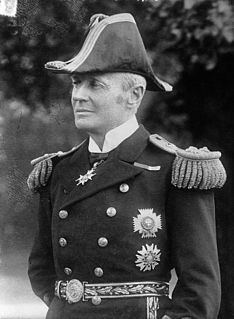The 'log' series of books were a series of at least 40 books written by members of the crew of various Royal Navy ships about their service between 1900 and 1909. They were published by Westminster Press and 4 shillings each. The write up of the series at the back of the books say that only 'happy ships' were written up.
The following is a list of [most of the] books in the 'log' series:
- HMS Argonaut, China Station, 1900–1904.
- HMS Astraea, China Station, 1899–1903.
- HMS Arethusa, went Round the World, 1899–1903.
- HMS Amphion, Pacific Station, 1901–1904.
- HMS Archer, Australian Station, 1900–1904.
- HMS Archer & Karrakatta, Australian Station, 1900–1904.
- HMS Bonaventure, Pacific and China Stations, 1903–1906.
- HMS Bulwark, Flagship, Mediterranean Station, 1902–1905.
- HMS Carnarvon, Mediterranean Station, 1905–1907.
- HMS Cumberland, Mediterranean Station, 1904–1906.
- HMS Caesar, Mediterranean Station, 1900–1903.
- HMS Crescent, Cape Station, 1904–1907.
- HMS Diana, Mediterranean Station, 1904–1606
- HMS Eclipse, China Station, 1901–1904.
- HMS Fox, East Indies Station, 1901–1904.
- HMS Flora, Pacific Station, 1902–1905.
- HMS Glory, China Station, 1900–1904.
- HMS Grafton, Pacific Station, 1902–1905.
- HMS Goliath, China Station, 1900–1903.
- HMS Hyacinth, Flagship, East Indies Station, 1903–1906.
- HMS Implacable, Mediterranean Station, 1902–1905.
- HMS Karrakatta, Passage Home from Australia, 1904.
- HMS Lancaster, Mediterranean Station, 1904–1906.
- HMS Naiad, East Indies and Mediterranean Stations, 1901–1904.
- HMS Perseus, East Indies Station, 1901–1904.
- HMS Pandora, Mediterranean Station, 1901–1904.
- HMS Phaeton, Pacific Station, 1900–1903
- HMS Pelorus, Cape Station, 1904–1906.
- HMS Pelorus, Cape Station and Amazon journey. 1906–1909: Across a continent in a man-of-war: being the log of commission of HMS Pelorus 1906–1909 with a full account of her cruise of 2000 miles up the Amazon.
- HMS Russell, Mediterranean Station and Atlantic Fleet, 1906–1908.
- HMS Royal Arthur, Flagship, Australian Station, 1900–1904.
- HMS Retribution, North America and West Indies Stations, 1902–1904.
- HMS Ramillies, Mediterranean Station, 1900–1903.
- HMS Renown, Mediterranean Station and Voyage to India, 1900–1904.
- HMS Repulse, Mediterranean Station, 1902–1904.
- HMS Sutlej, China Station, 1904–1906.
- HMS Scylla, Newfoundland Fisheries, 1905–1906.
- HMS Talbot, China Station, containing an account of the Battle of Chemulpo Bay, as seen by the Ship’s Company, 1901–1904.
- HMS Victorious, Mediterranean Station, 1899–1903.

HMS Argonaut was a ship of the Diadem-class of protected cruiser in the British Royal Navy. She was laid down in 1898, and commissioned for service on the China station in 1900. From 1906 she served in the Home Fleet, and during the First World War she served in the Atlantic. She was converted to hospital ship in 1915, and sold for breaking up in 1920.

HMS Astraea was an Astraea-class second class cruiser of the Royal Navy. She was built towards the end of the nineteenth century, and survived to serve in the First World War.

HMS Arethusa was a second-class cruiser of the Leander class, which served with the Royal Navy. She was built at Napier, Glasgow, being laid down in 1880, launched in 1882 and completed in financial year 1886–87. She remained in ordinary reserve at Chatham, being commissioned for the 1887, 1888, 1889, 1890, and 1892 annual manoeuvres. She served in the Mediterranean from 1893 to 1896, was commissioned for the 1899 annual manoeuvres, then recommissioned for the Pacific, and later sent as a reinforcement to the China Station during the Boxer Rebellion until she came home for the last time in 1903.















